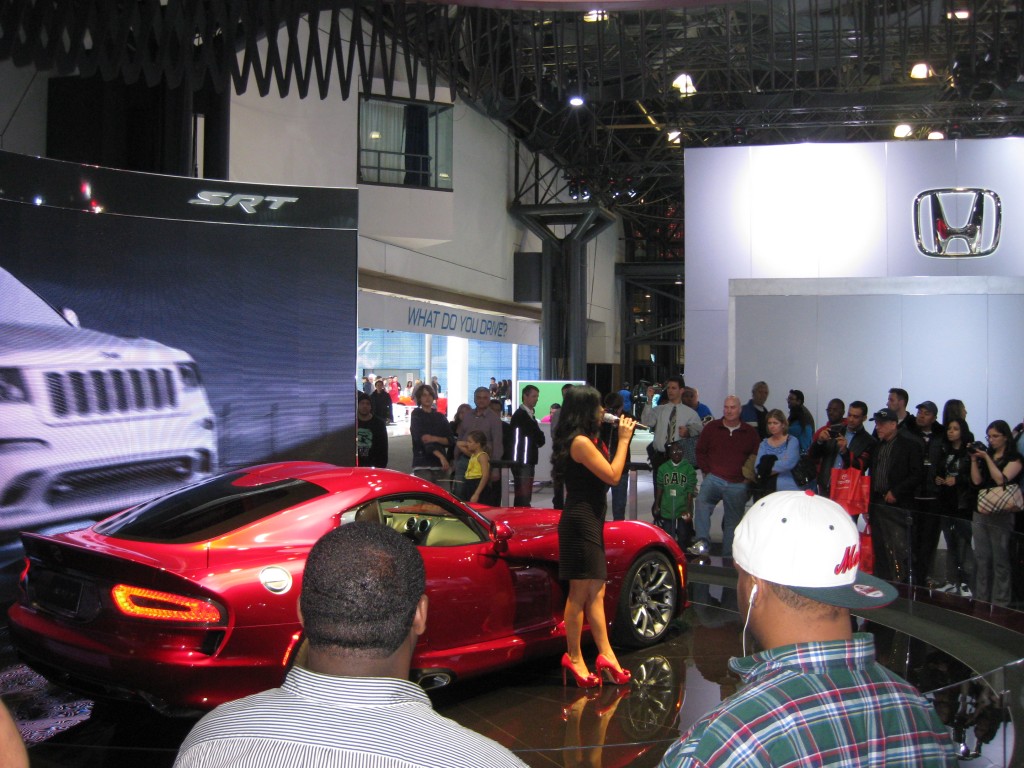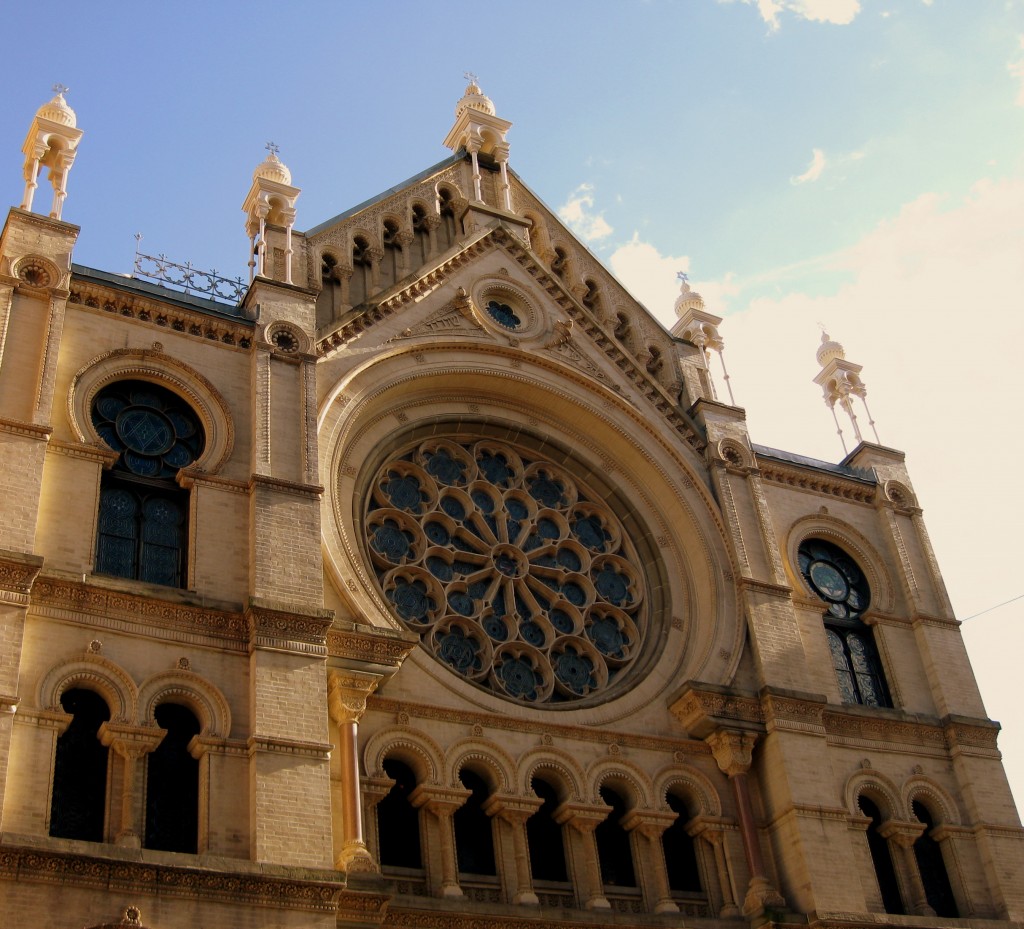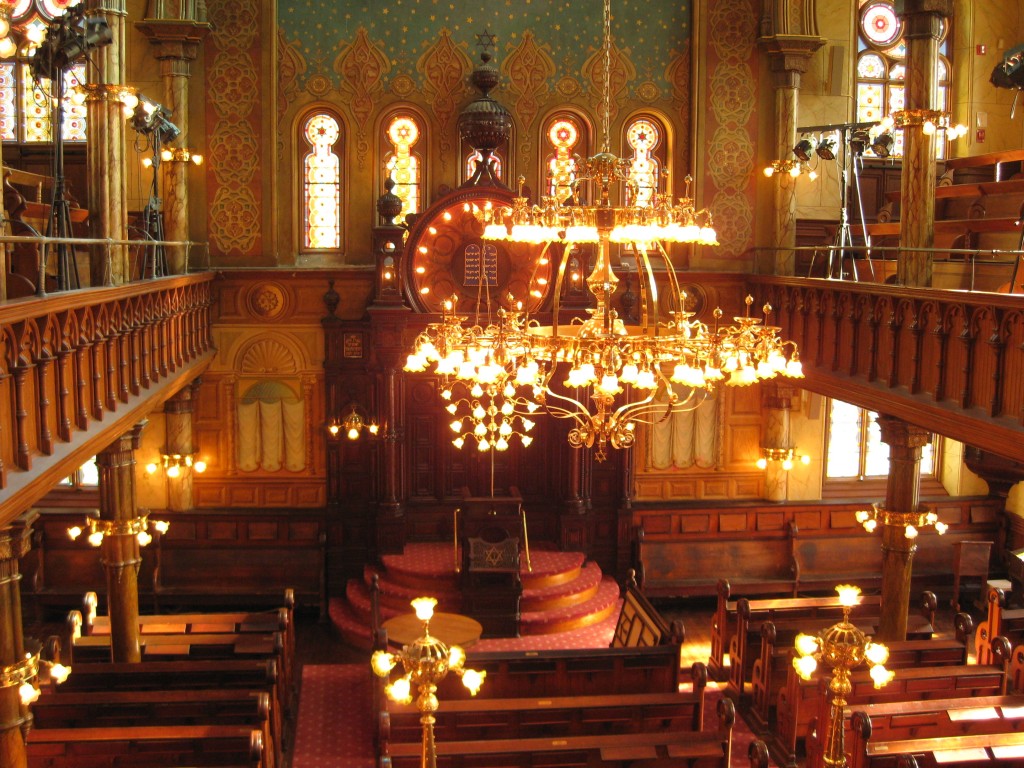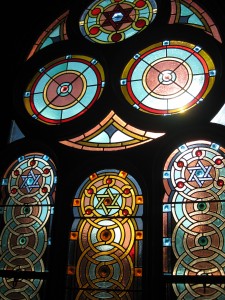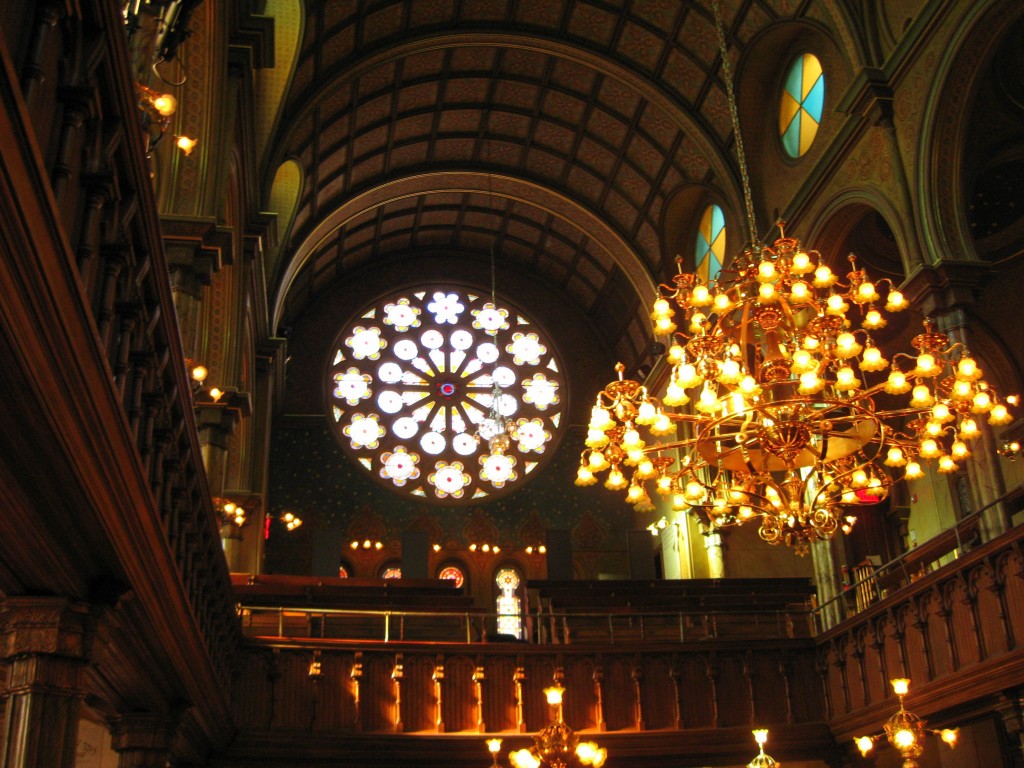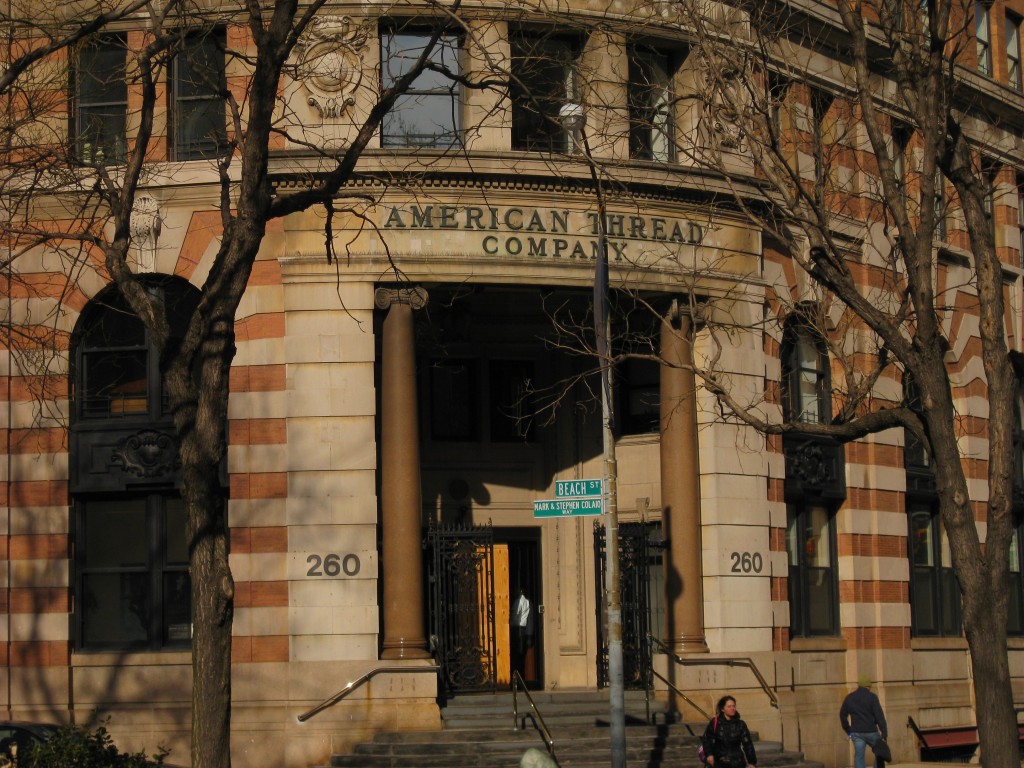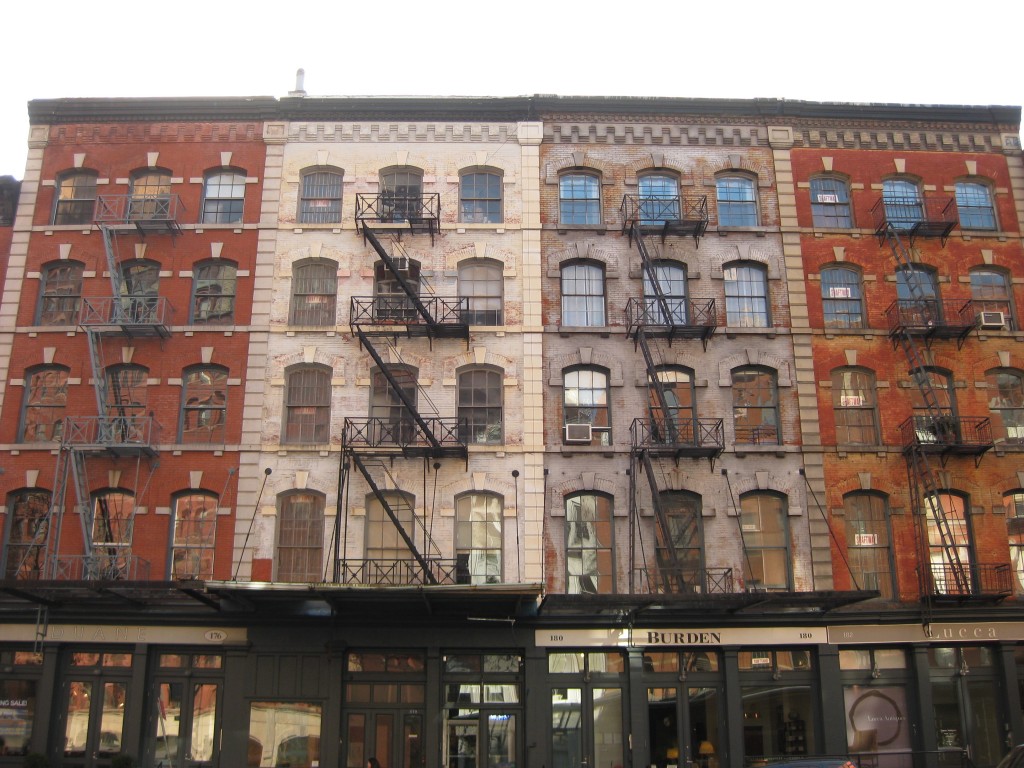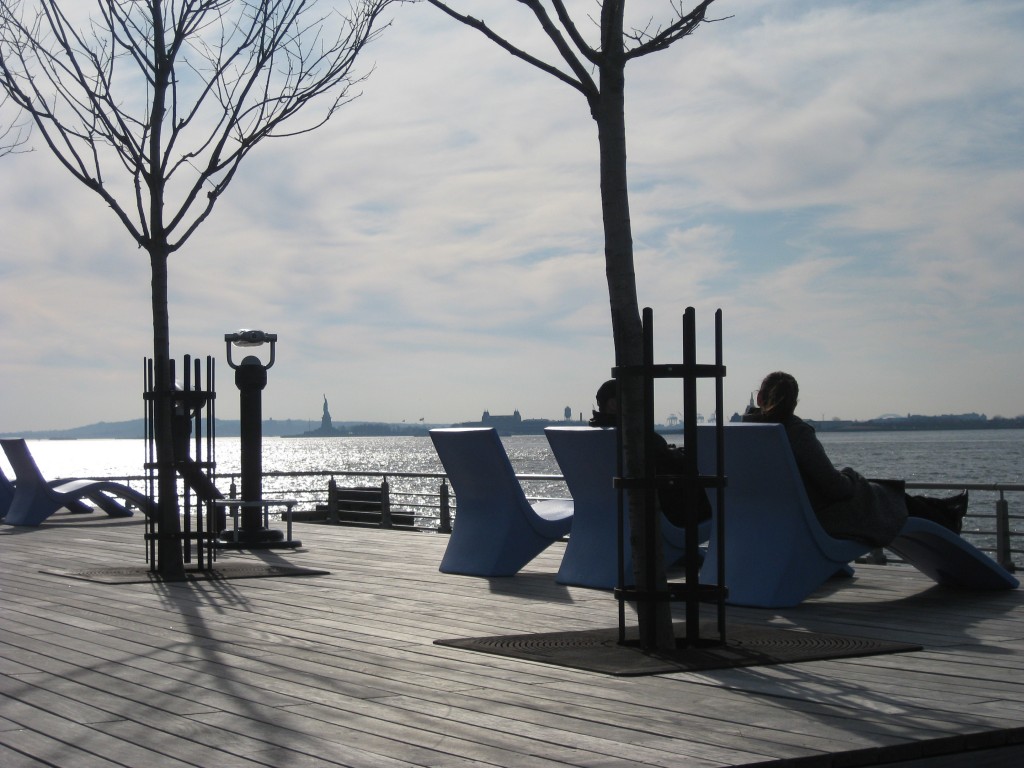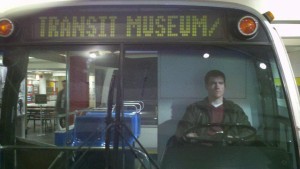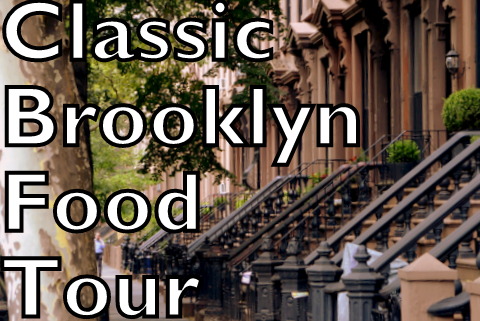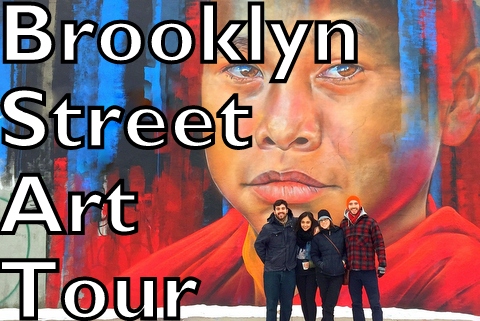Who doesn’t enjoy a visit to the Cathedral of St. John the Divine? Largest cathedral in the United States and fourth largest in the world, St. John’s inspires all but the most traveled of churchgoers (specifically “Vaticans,
New York International Auto Show
Each April, car enthusiasts from all over the New York metro area descend upon the Javits Center for the International Auto Show. Knowing nothing about cars, but curious about the hype, I decided to go to the show this year with the eye of a dilettante.
Some of it was just what you might expect—unveiled 2013 models, new concept cars. But I was pleasantly surprised at the theme that unified vehicles across the spectrum: environmental friendliness. It seems like every manufacturer from Lexus to Ram is developing a hybrid, plug-in, or more fuel-efficient model.

A car that can transform into a plane. I’m holding out for the model that includes boat and train options as well.
By far the most exhilarating thing I learned at the show was that DeLorean is back…and it’s going green! DeLorean Motor Company, based out of Northern Ireland, survived for less than a decade before declaring bankruptcy in the early 80s. But the car’s legacy lives on—it will forever be remembered as the car Christopher Lloyd converts into a time machine in the Back to the Future trilogy. But who knew that DeLoreans are now being made once again, this time out of Houston, Texas?
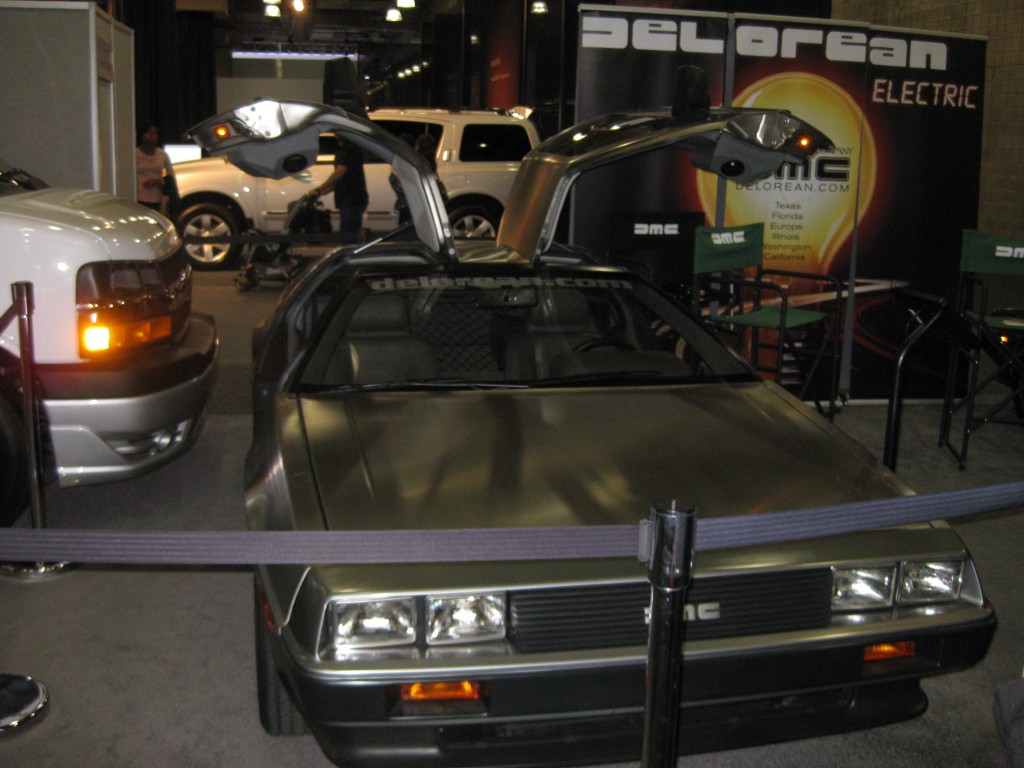
The Electric DeLorean which will go on sale next year. For a mere $90,000, you can have that 1980s style without tailpipe emissions!
I found the show to be moderately exciting and definitely worth going to once. And it was interesting to check out the Javits Center, New York’s premiere convention center, which may soon be slated for either renovation or demolition…or both?! Do I need to go to another auto shows any time soon? Not until DeLorean puts out the model that time-travels at 88mph!
Central Park Rock Climbing
Most of my friends know that a major passion of mine is rock climbing, but few are aware that my first outdoor climbing experiences took place right here in New York City. A small, but active climbing scene exists in Central Park, ideal for city-dwellers like myself who crave climbing close enough to access by subway. Last week, with temperatures in the mid-60s, I took my camera to the park in search of climbers emerging from their winter hibernation.
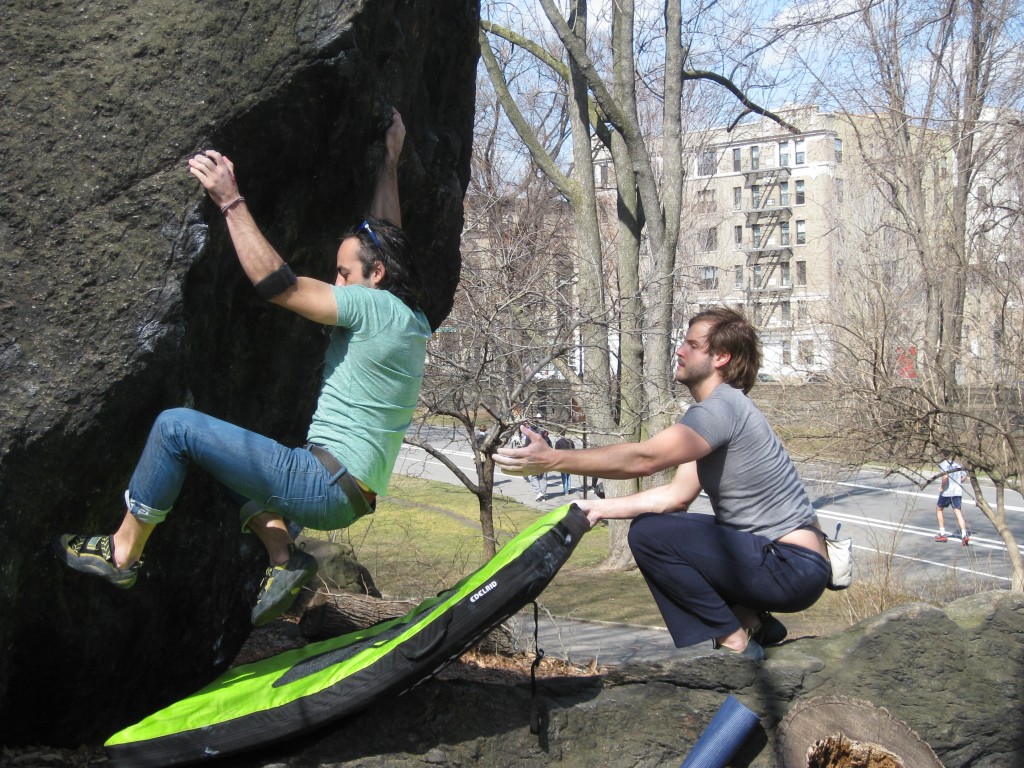
A boulderer with his crash pad and spotter at the northern tip of the park—110th St. and Adam Clayton Powell Blvd.
The type of climbing practiced in Central Park is bouldering, meaning the climber uses no rope or gear and stays low to the ground. Often a crash pad is used to cushion falls or a spotter watches to ensure that the climber falls safely. Bouldering draws on the same sense of joy that kids experience when they scramble around rocky crags—getting to the top of even a relatively low rock can be challenging and surprisingly enjoyable.
[caption id=”attachment_319″ align=”aligncenter” width=”500″ caption=”A climber at “Rat Rock,
Filed under Parks
Strivers’ Row
While participating in a walking tour of Harlem by fellow guide Matt Baker, I came upon one of the all-time great blocks of New York: Strivers’ Row. Located at W 138th and 139th St. between Adam Clayton Powell Jr. Boulevard (7th Ave) and Frederick Douglass Boulevard (8th Ave), these magnificent row houses tell the story of the changing perceptions and demographics of New York’s most notorious neighborhood.
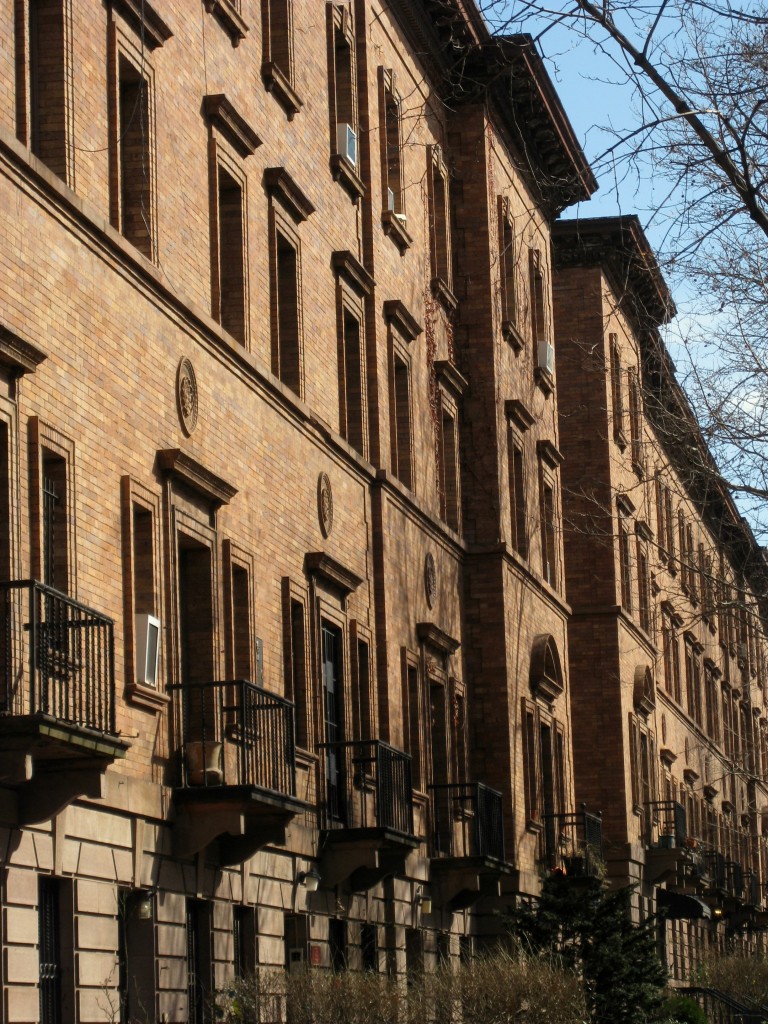
The dark brick Italian Renaissance houses of Strivers' Row designed by McKim, Mead and White on W 139th St.
Like much of northern Manhattan, Harlem remained rural and relatively isolated well into the 19th century. Not until midcentury did the neighborhood began to attract its first urban residents—Irish and German immigrants who settled in shantytowns.
The construction of elevated railroads in 1880 precipitated land speculation. Block after block of rowhouses was constructed in anticipation of new waves of affluent, white residents. Grandest of them all were the properties on 138th and 139th streets by developer David H. King in 1891.
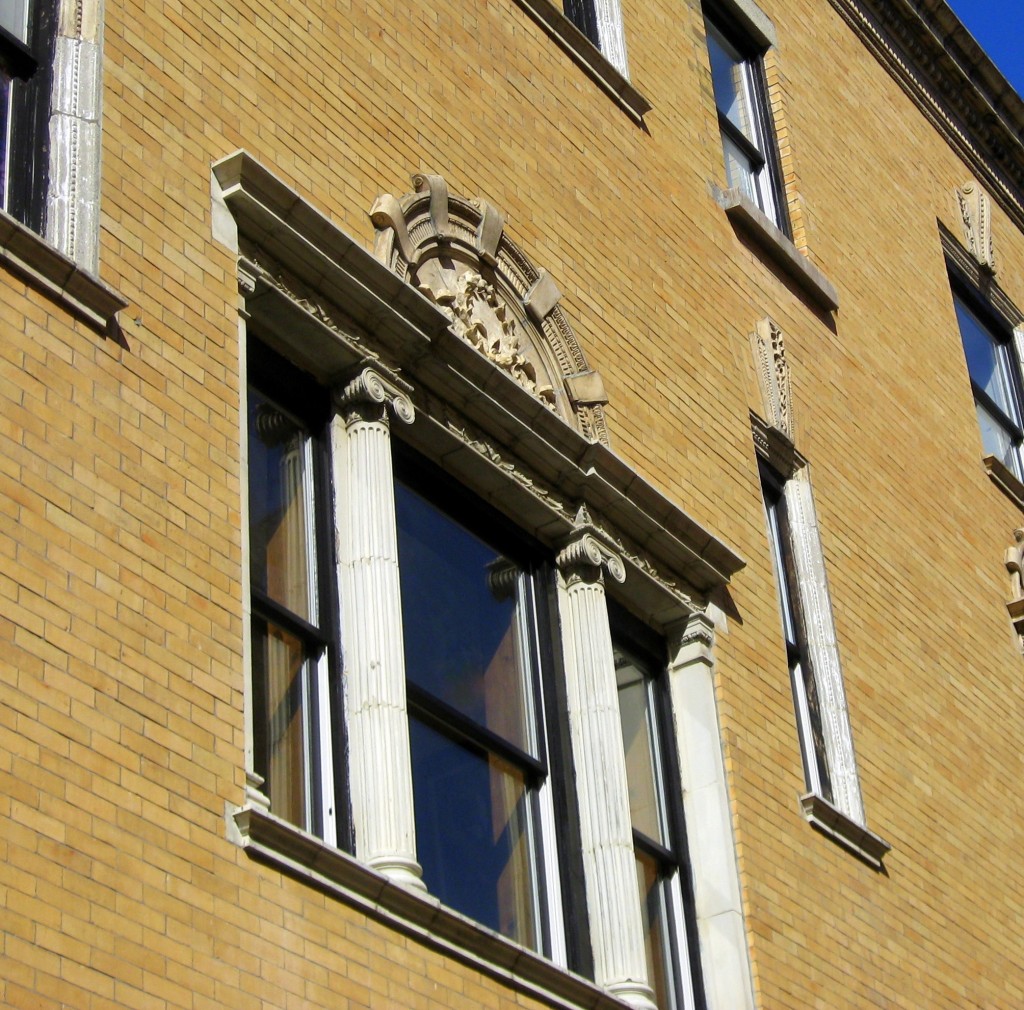
The yellow brick with terra-cotta and limestone trim of Strivers' Row at W 138th St., designed by Bruce Prince.
To increase the attractiveness of his homes, King hired 3 sets of prominent architects to design a stretch of the row each. Most noteworthy was the prestigious firm McKim, Mead and White, already commissioned at this point to design the Arch in Washington Square Park
[caption id=”attachment_274″ align=”aligncenter” width=”225″ caption=”Unlike the vast majority of the homes in New York, Strivers' Row was designed with a private back alley for carriage houses. Today the entrance still reads: “Walk Your Horses
Filed under Landmarks, Neighborhoods
The Eldridge Street Synagogue
I have visited many famous places of worship in New York but I feel confident saying that none took my breath away like the Eldridge Street Synagogue. Regardless of your religious background, this synagogue and museum is well worth a visit for its beauty and the chance to step into a time capsule of American immigrant history. But due to its only recent restoration and revival, this Lower East Side gem is just beginning to gain notoriety from tourists and locals alike.
Completed 1887, this was the first synagogue in America built by an Eastern European Jewish congregation. At this time, the Lower East side was a repository for hundreds of thousands of immigrants arriving each year to the New World. German Jews were the first to arrive en masse in the mid-19th century. But due to cultural similarities and a relatively high level of education, their assimilation was rapid and they gradually progressed uptown. The Eastern European Jews, however, arriving from the early 1880s on, came from more rural, impoverished backgrounds. By 1900, over 50% of the immigrants arriving in America were Jews from countries such as Russia, Poland, and modern Lithuania, Ukraine, and Belarus.
In contrast to the dismal tenements and sweatshops of the Lower East Side, the Eldridge Street Synagogue boasted lavish decorations, stained glass and vaulted ceilings. Its worshipers represented a mixture of socio-economic backgrounds and its services on high holidays drew such crowds that policemen kept order on the streets outside.
However, the Great Depression and changing demographics in the Lower East Side saw a dwindling congregation at Eldridge Street. Furthermore, the Immigration Act of 1924 specifically excluded Eastern Europeans by using the 1890 census as the basis for entrance quotas, essentially making Jewish immigration impossible. In the 30s, unable to pay the bills and maintain the building, the main sanctuary was closed off and the congregation began holding services in the unheated basement.
Luckily, in the mid-80s, the synagogue was saved from disrepair. The sanctuary was rediscovered and a non-profit organization was established to raise money for a restoration. Part of the west roof had caved in and pigeons were roosting throughout the synagogue. A 20-year, $18.5 million renovation was completed in 2007, and today the building serves as a museum, an active Orthodox synagogue and a National Historic Landmark. To truly get a sense of the synagogue and the immigrants who once worshiped there, I highly recommend a visit and guided tour–free on Mondays! On a sunny day, the illumination of the sanctuary is spectacular.
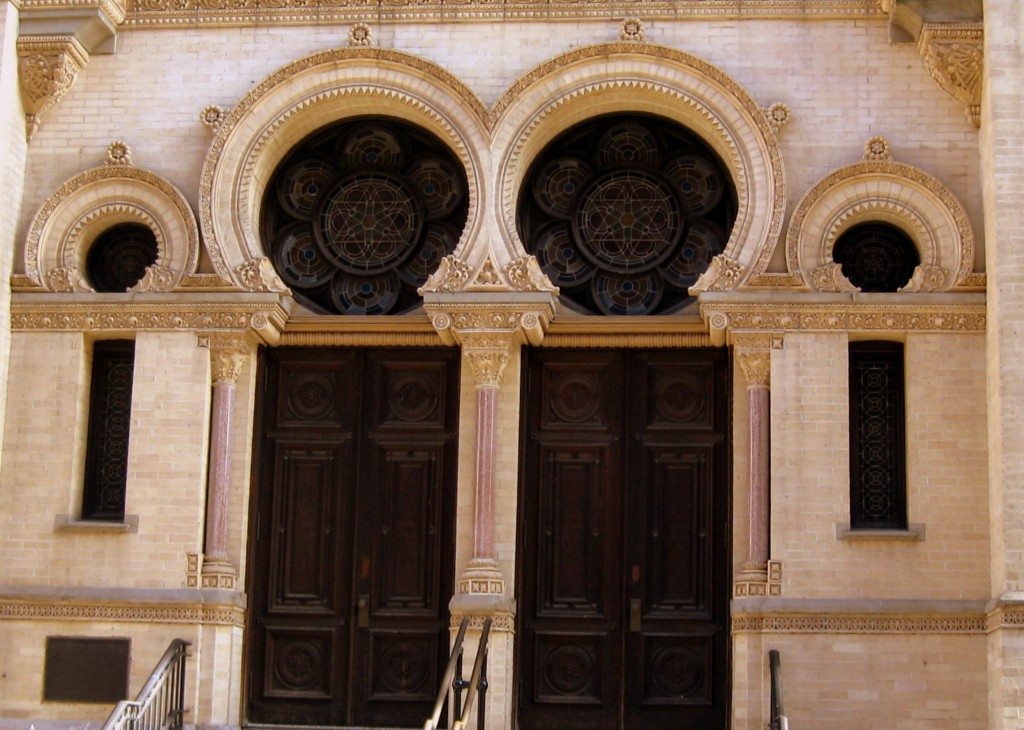
The intricate Moorish Revival front entrance. Only men would enter through these doors to worship on the main floor of the sanctuary. Women and children would enter through the basement and climb two floors to the segregated balcony so as to not distract the male worshipers.
For more information, visit the museum website
Filed under Landmarks, Museums, Religious Spaces
TriBeCa
What Manhattan neighborhood boasts cobblestoned streets, factory lofts-gone-residential, an international film festival and the firehouse from Ghostbusters? Why TriBeCa, of course!
A Recent History
In the 1970s, TriBeCa, short for the Triangle Below Canal St., became one of Lower Manhattan’s first manufacturing neighborhoods to be renamed and rezoned for residential use. The decades before had seen an exodus of industrial and commercial tenants and the area, then known as Washington Market, or simply the Lower West Side, had fallen into disuse.
With the 80s arrived artists and families, spurring urban renewal which has since characterized Manhattan’s west side.
TriBeCa Revitalized
Today, in classic New York form, TriBeCa’s gritty exterior conceals some of the most expensive apartments. In fact, TriBeCa is second only to SoHo in terms of real estate value in the city, ranking as the country’s 7th most expensive zip code, according to Forbes Magazine.[1]
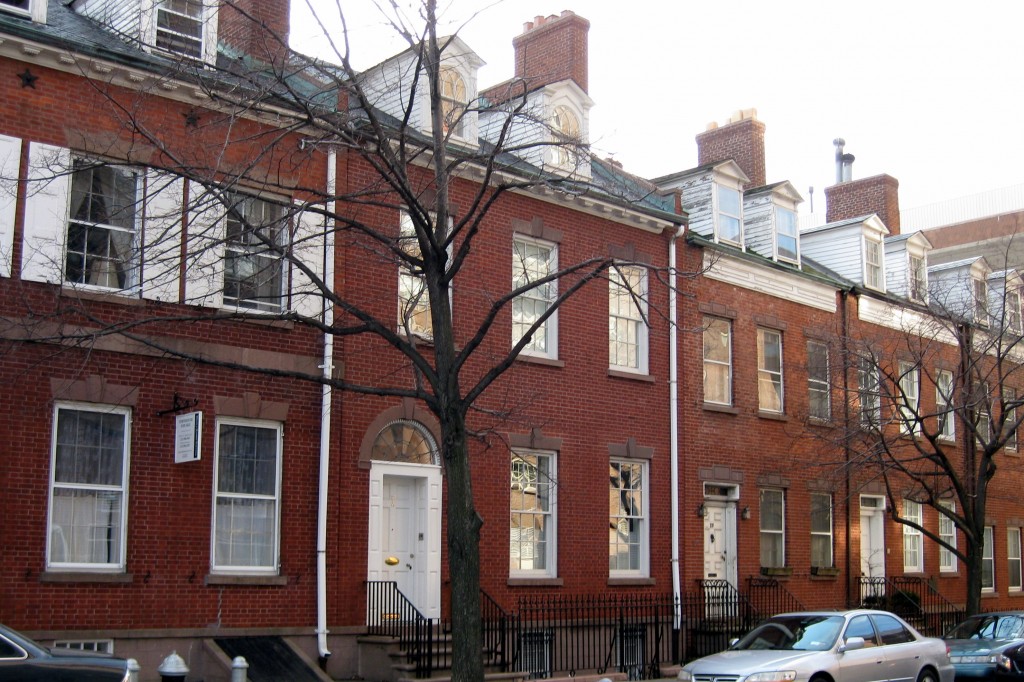
Hidden on Harrison St. is a lone row of 18th century Federal-Style Townhouses built by John McComb Jr., who designed City Hall
A walk through Tribeca reveals a unique mix of historic and modern, grungy and chic. New development, such as the Washington Market Park, the TriBeCa Grand Hotel, and countless Zagat-rated restaurants only add to the neighborhood’s appeal.
Best times to visit TriBeCa in 2012
- April 18-29 – The 11th Annual TriBeCa Film Festival, created by Robert Di Nero to revitalize the neighborhood after 9/11
- April 27-30 – The 16th Annual TriBeCa Open Artist Studio Tour, a weekend of free, public, self-guided tours through 40 studios showcasing the work of over 100 artists
- Whenever the weather is nice! – Especially to enjoy Hudson River Park Pier 25 and its beach volleyball courts, mini golf, and great views of the Hudson
[1] America’s Most Expensive Zip Codes 2011. Forbes. Retrieved 25 Jan 2012.
Filed under Neighborhoods
The New York Transit Museum
Welcome to my New York City Blog! Here I share updates on places I’ve visited recently in New York, visitors I’ve had or tours I’ve given. The subject of this first post is…the New York Transit Museum.
Last week, I had the pleasure of visiting the New York Transit Museum for the first time. Well the first time since I was old enough to care about anything more than sitting in the driver’s seat of the buses. Located in the old Court Street station of the little-used Independent subway system, this lesser-known Brooklyn museum is fascinating for kids and adults alike. However, it doesn’t have the mass appeal of the Met or even the Museum of the City of New York. This museum is best for anyone with an interest in New York’s public transit system or kids who find buses and trains fascinating—so basically all kids. Having been a Geology major in college, one of the exhibits I enjoyed the most was about the bedrock of Manhattan and the various struggles encountered while tunneling through it.
Here are some interesting facts I learned:
- The subway cost a nickel from its opening in 1904 until 44 years later when that fare doubled to a dime. This is somewhat amazing considering that the fares have increased an average of every 4 ½ years since then.
- The only place in Manhattan (other than the northernmost tip) where the subway goes above ground is on the IRT #1 train at 125th St. This is because of the Manhattan Valley, a topographical exception to the generally flat island of Manhattan. The subway goes above ground for 13 blocks to avoid a steep decline followed by a rapid incline.
- The MTA sends more bills (number, not monetary value) to the Federal Reserve than any other organization in the country.
Don’t miss their collection of old trains on display and the old ads and subway maps inside them. And just because I’m older, doesn’t mean I can’t still drive the buses!
Filed under Museums






